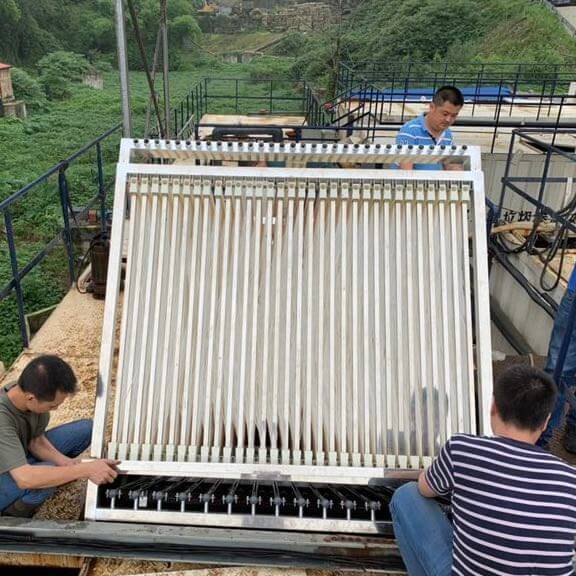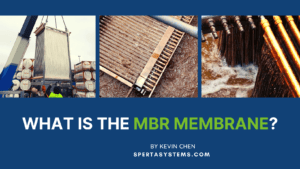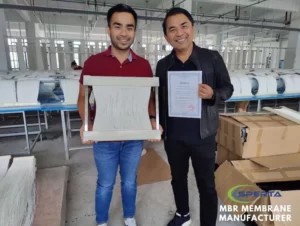Last Updated on July 24, 2022 by Kevin Chen
MBR membrane bioreactor is a new type of water treatment technology that combines membrane separation technology and biotechnology. The membrane bioreactor process dramatically enhances the function of the bioreactor through membrane separation technology, increasing the concentration of activated sludge, and it can control its hydraulic retention time (HRT) and sludge retention time (SRT) separately. The following will tell you about the process features of the MBR membrane.
The MBR membrane technology originated in the 1970s, and its commercial product application has well replaced the role of the secondary sedimentation tank in the activated sludge process in the traditional water treatment. Compared with the traditional water treatment method, the MBR membrane module process has the following characteristics:

- High treatment efficiency, the effluent can be directly reused.
Since the hollow fiber membrane has an efficient separation effect on the mixed liquid of the biochemical reactor, it can completely separate the sludge from the effluent, so the SS and turbidity of the effluent can be close to zero. At the same time, because the loss of activated sludge is almost zero, the concentration of activated sludge in the biochemical reaction can be increased by about 2-6 times compared with the traditional process, which significantly improves the denitrification capacity. - The system runs stably, has a simple process, and small Footprint.
Due to the high concentration of activated sludge in the mbr technology, the volume load of the device is large; it has good resistance to influent fluctuations and shocks and runs stably. This process not only greatly reduces the volume of the biochemical reactor-aeration tank but also miniaturizes the equipment and structure and even saves the primary and secondary sedimentation tank, thus reducing the system footprint. - Long sludge age and less residual sludge.
When the sludge concentration is high and the influent load is low, the ratio of nutrients to microorganisms (F/M) in the system is low, and the sludge age becomes longer. When F/M keeps a certain low value, the growth of activated sludge is close to zero, which reduces the treatment cost of excess sludge. - Convenient operation and management, easy to realize automatic control.
Since the membrane separation can completely intercept the activated sludge in the bioreactor, it can completely separate the hydraulic retention time (HRT) and the sludge retention time (SRT) in the bioreactor so that it can control it flexibly and stably. At the same time, it is easy to realize automatic control, which improves the automation level of sewage treatment.

The above are the 4 features of the MBR process. If you have any other related questions, don’t hesitate to get in touch with SPERTA.
Shanghai SPERTA Environmental Technology Co., Ltd. has specialized in producing water treatment products for many years. The company has its own MBR membrane technology, a complete technical team, and pre-sales and after-sales service. If you have any needs, please feel free to contact us.








